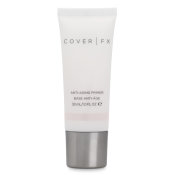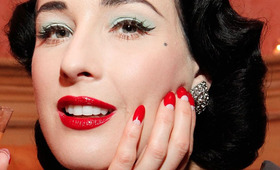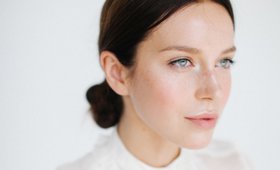Anatomy of a Beauty Product: Primers
Published Sep 9, 2013

These days, it seems like primers are all over the beauty market. And it’s no wonder—they work! Think about it: it’s normal for the skin’s surface to be textured from pores, fine lines, and inflammation. In other words, the complexion isn’t flat and smooth. So when you apply foundation over bare, un-primed skin, you may find it more difficult to blend the product out. The foundation might then settle into every crevice, accentuating flaws and enlarging the appearance of pores (especially with a heavily pigmented formula). Adding to the challenges of foundation application is your skin type—those with normal, oily, and dry skin will get different results.
Originally, primers were invented to prime the skin for a smoother foundation application, much like you’d use primer on a wall before painting it. Eyelid primers are also popular nowadays, meant to make eye shadows go on smoother and last longer. Whether marketed for the face, the eyes, or both, the anatomy of a primer will be similar.
Key Ingredient: Silicone
Primers form a film on the skin that are usually soft, cushiony, smooth, and silicone-based. Silicone derivatives are used in majority of primers because they provide a slippery feel that helps foundation and cream blushes glide like magic over any skin texture rather than absorbing into the skin. They also help to minimize the appearance of pores and fine lines.
When you look at the label of your favorite primer, you may see many of the following silicone-based ingredients listed. Usually, they compose the majority of the formulation:
cyclopentasiloxane, dimethicone, dimethicone crosspolymer, dimethicone/vinyl dimethicone crosspolymer, phenyl trimethicone, PEG-10 dimethicone, dimethiconol, bis-PEG/PPG-14/14 dimethicone
There are also primers that don’t contain silicone; generally they’re better for good skin that doesn’t require much coverage. Silicone-free primers rely on either gelled oils, which may feel a little greasier on the skin than silicone (with silica) or gelled water-based formulations (with acrylates or C10-30 alkyl acrylate crosspolymer).
Other Ingredients: The Breakdown
Here’s a breakdown of other types of ingredients you may see in primers.
Oils, Esters, Extracts, or Waxes
Examples: jojoba oil, caprylic/capric triglyceride, green tea extract, beeswax
What they do: all of these have to do with a way a primer looks and feels; for example jojoba oil might make the formula a little more fluid, while beeswax makes it more waxy.
Emollients and Humectants
Examples: these can take the form of trendy natural oils like argan; vegan-based emollients like caprylic or capric triglyceride, or glycerin
What they do: emollients and humectants are similar but offer slightly different purposes; the former softens skin while the latter hydrates
Mineral Clays
Examples: hectorite, bentonite
What they do: absorb oil; primers with minerals clay are best for oily skin types to achieve a matte finish
Thickening Agents
Examples: beeswax, acrylates/C10-30 alkyl acrylate crosspolymer, silica, dimethicone crosspolymer
What they do: these gel/thicken the formula and hold other ingredients together
Preservatives
Examples: parabens, phenoxyethanol, food-grade sodium benzoate
What they do: protect the product from microbial contamination
Note, more natural formulations in air-tight containers may offer preservative-free formulations.
Colorants
Examples: (+/-) titanium dioxide, iron oxides
What they do: many primers are universal, but some art tinted to match different skin tones; you’ll see colorants in tinted formulas
The Last Word
For added skin benefits, primers may contain botanical extracts, vitamins, or bio-actives, like peptides for anti-aging or octinoxate (a form of SPF) for sun protection.
Primer Picks
Classic: Smashbox Photo Finish Foundation Primer
Natural/Organic: Korres Pomegranate Mattifying Face Primer
Anti-aging: Cover FX SkinPrep FX
As told by Jenny Frankel, a beauty engineering consultant, and president at Frankly Beauty, Inc. and a former cosmetics formulator.
Photo: Image Source
















